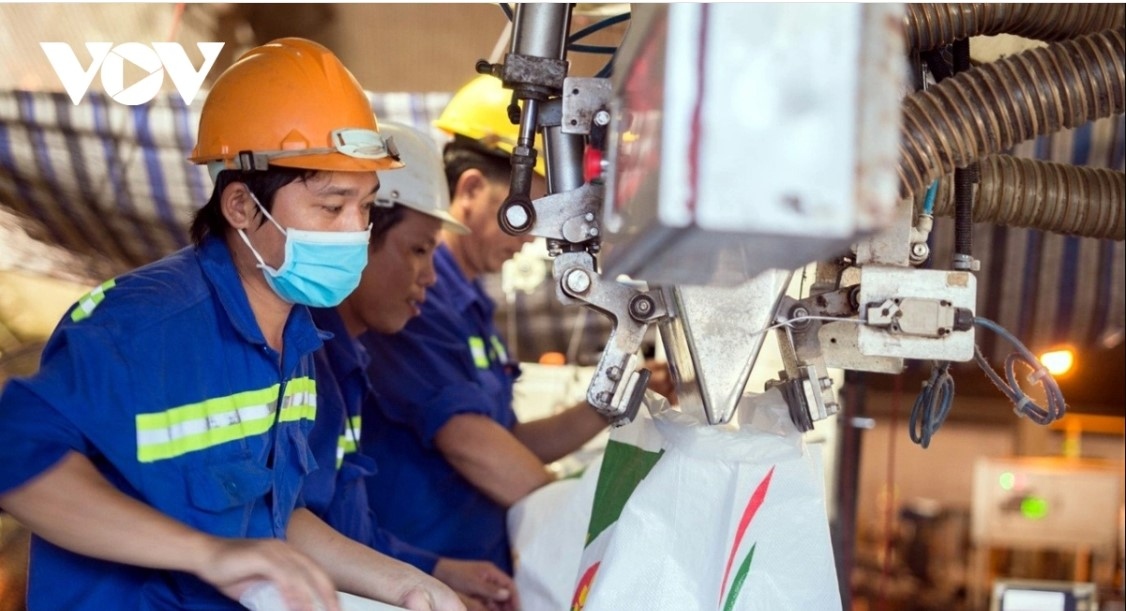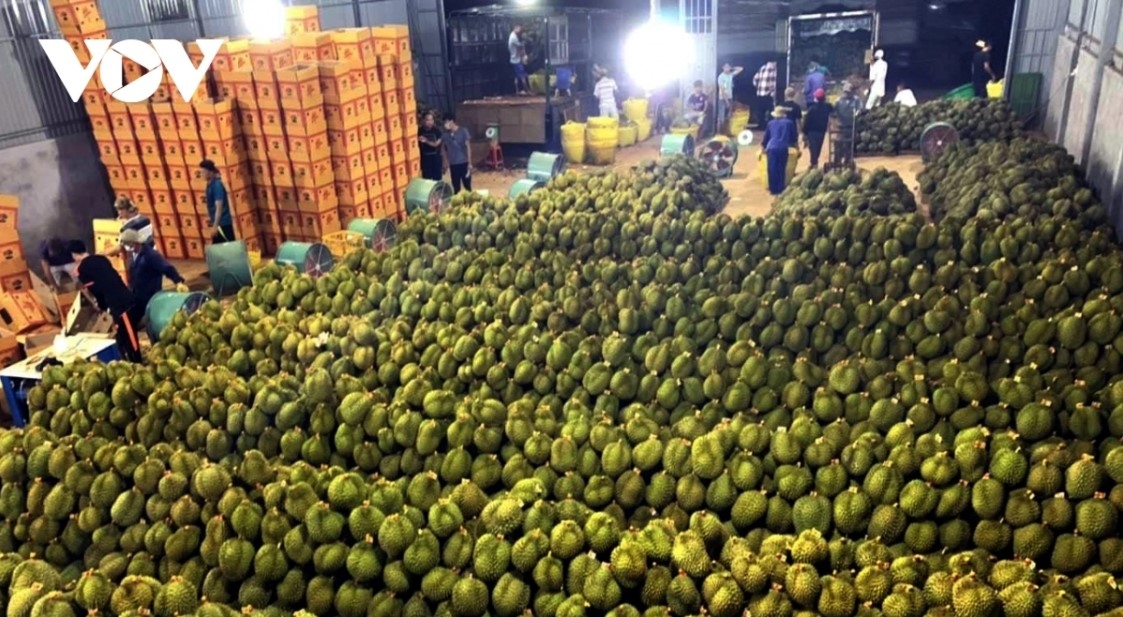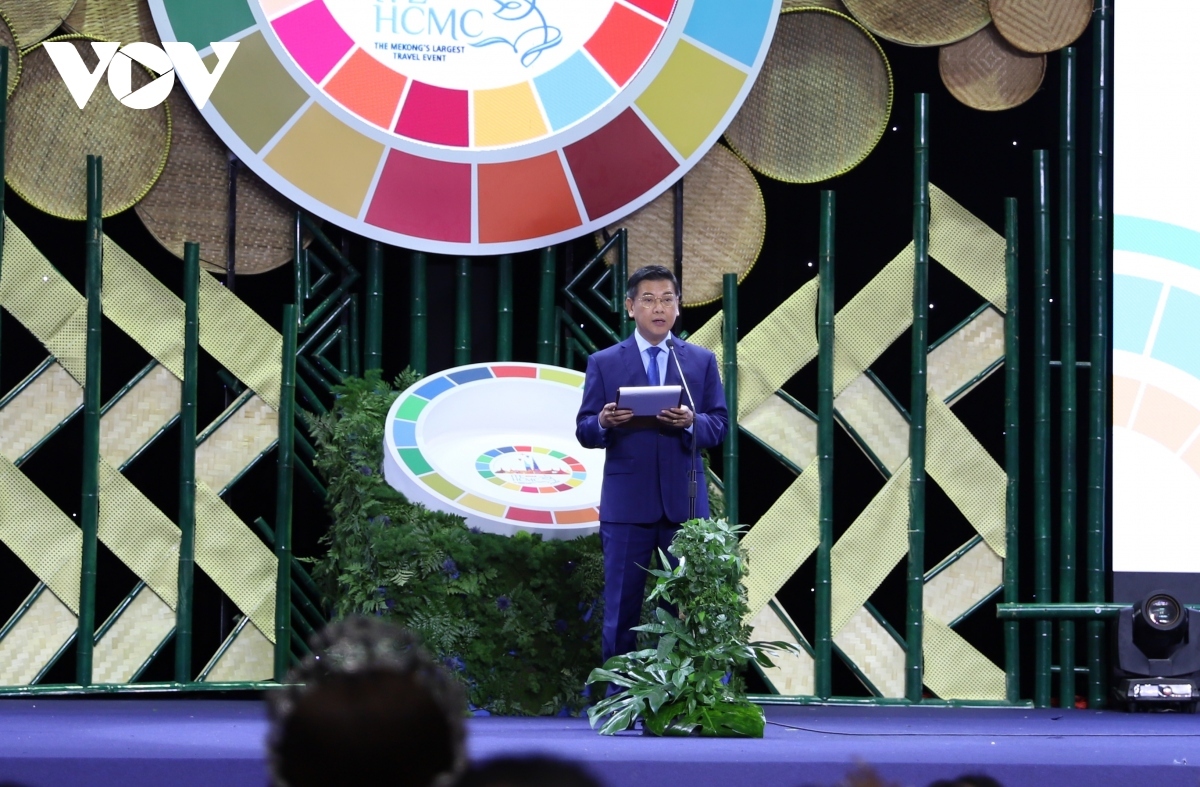VOV.VN - Although Vietnamese import and export activities in 2023 have yet to record a strong recovery, the decline has narrowed significantly, a factor which will serve as a premise for prosperity in the year ahead.

Vietnamese rice exports in 2023 enjoy both quantity and price benefits
Import and export activities last year saw great support from international economic integration, thereby helping the country to become an important link in terms of the global value chain, with many strong industries continuing to continuously hold the top position in world export turnover.
Amid difficulties occurring in the world economy coupled with a general decline in the global aggregate demand, although Vietnamese import and export activities did not increase compared to the previous year, the decline significantly narrowed.
Total export-import turnover in 2023 was estimated to have reached US$683 billion, of which exports hit roughly US$354.5 billion and imports stood at around US$328.5 billion.
The trade balance continued to enjoy a trade surplus for the eighth consecutive year with an estimated surplus of nearly US$30 billion, a three-fold increase over 2022.
Assessing import and export activities in 2023, a representative of the Import-Export Department under Ministry of Industry and Trade said that the country has actively taken advantage of opportunities from the recovery of large, traditional markets in a bid to boost exports.
The trade surplus can primarily be put down to imports falling more sharply than exports, thereby showing difficulties in producing goods for exports.
The import of of raw materials, machinery, and equipment for production has not increased significantly, thereby indicating that although export orders have recovered, there remains numerous difficulties ahead.
The highlight of exports last year came thanks to the effective management and expansion of export activities to China, thereby contributing to increasing export turnover as the neighbouring country became the only market among major Vietnamese export markets to record positive growth.
Most notably, Vietnamese exports to China soared by about 8.1% for the whole of 2023, while other major markets witnessed a fall.
Le Hoang Tai, deputy head of the Trade Promotion Agency under the Ministry of Industry and Trade, commented that economic and trade co-operation activities between the country and China over recent years have continued to develop. According to statistics compiled by Vietnam Customs, during the past 11 months of 2023, total Vietnamese import-export turnover with China reached a figure of US$155.8 billion, with two-way trade in 2023 estimated to have hit the same turnover level as the two sides achieved in 2022.

Vietnamese durian is gradually conquering the Chinese market
“Although China has an important position and role and is viewed as a potential market, Vietnam's economic and trade cooperation with China is still below both nations' full potential when imports and exports still account for a very modest proportion in their total trade turnover," Tai continued.
Market expansion with products meeting 'green' standards
Entering 2024, many experts believe that import and export activities will continue to face many unforeseeable risks.
The trend of trade protection appears more with many countries taking measures aimed at bringing investment back home, while also erecting trade barriers to protect and boost domestic production.
Looking at changes occurring in different markets, many businesses affirm that converting to green production is no longer an option but a mandatory requirement and an imperative of markets.
Vu Duc Giang, chairman of Vietnam Textile and Apparel Association (Vitas), affirmed that in addition to price factors, product quality and delivery time, greening and sustainable development are competitive criteria which major markets such as the United States, the EU, and Japan require from suppliers.
“If Vietnamese export enterprises want to survive, they must overcome the ‘green’ problem in production activities, with many criteria such as meeting waste treatment standards, energy-saving production, and waste recycling solutions. In the textile industry, just by using ‘green’ materials, input prices are 300% higher than traditional products. This is also a significant obstacle for textile and garment enterprises to continue on the path of “greening," Giang pointed out.
With the world forecast to continue to face major and unpredictable changes with many interwoven opportunities and challenges, Nguyen Cam Trang, deputy head of the Import-Export Department under the Ministry of Industry and Trade, noted that many markets pay greater attention to product standards related to consumer safety, sustainable development, and climate change response.
“However, exports in 2024 have a wealth of opportunities to recover and grow when inventory problems in many countries are gradually being overcome. Efforts to accelerate negotiations and diversify Vietnam's export markets will bring more competitive advantages to exports in the coming time," Trang optimistically shared.
In order to increase import-export turnover over the coming year, Deputy Minister of Industry and Trade Phan Thi Thang affirmed that the Ministry of Industry and Trade will speed up negotiations towards signing agreements, as well as pledging new trade links with potential partners in a bid to diversify products, markets, and supply chains. All of this will be done while supporting businesses in taking advantage of commitments in free trade agreements (FTAs) to bolter exports.
“In addition to key markets, the Ministry of Industry and Trade will coordinate with the Ministry of Agriculture and Rural Development to negotiate with China to open more export markets for Vietnamese fruit and vegetable products. The focus will be on well regulating the speed of customs clearance of import and export goods in Vietnam -China border gate area, especially seasonal agricultural and aquatic products in order to shift swiftly to official exports,” Deputy Minister Thang added.














